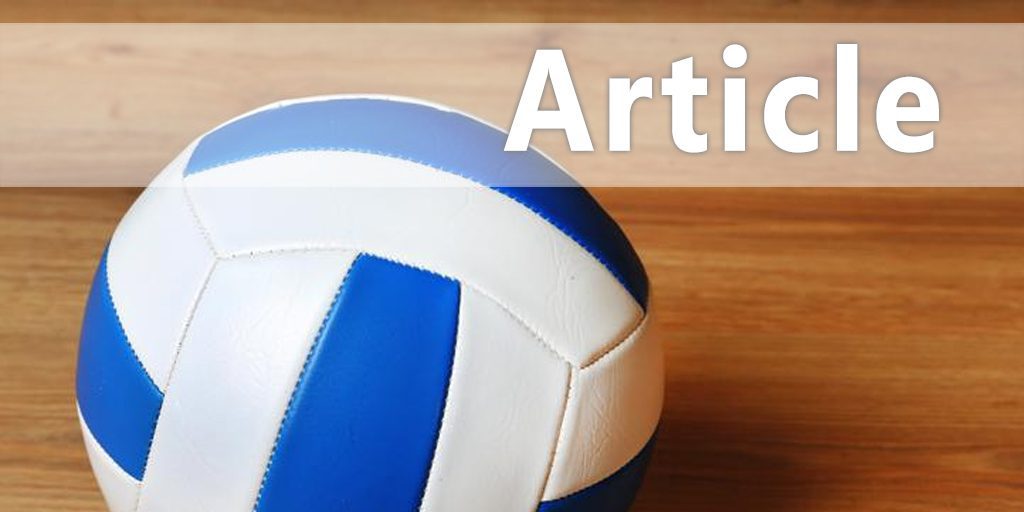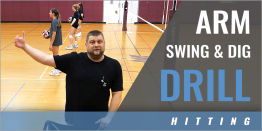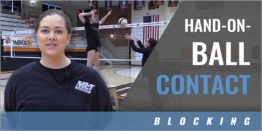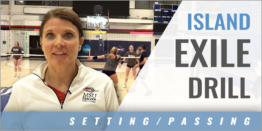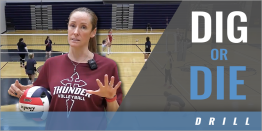|
By: Ken Kontor Originally published in: Coaching Volleyball Magazine
First, some definitions: volleyball skills include spiking, blocking, setting, passing, etc. Athletic skills include power, strength/stability, agility, quick movement, mobility, etc. The two are joined at the hip. You can improve a volleyball skill by improving athletic skills. For instance: Jump higher and you will block/spike better. "Whole" training is practicing a skill in its entirety, while "part" training is breaking down the skill into component parts and practicing those parts independently. In spiking, the "whole" would be the approach to recovery, and the "part" would be ball contact. The question remains, what system of training, whole or part, is most effective in developing these two skills? Whole Wins In a recent paper called "Motor Learning Principles and the Superiority of Whole Training in Volleyball" by Steven Bain, Ph.D. and Carl McGown, Ph.D., the authors "effectively conveyed the motor learning principles that guide the acquisition of skilled behaviors, thereby substantiating the evidence-based superiority of whole training strategies." They conclude "we are therefore confident that coaches who study and use these principles in their training environments will become more effective teachers, and as a result, their players will experience significant increases in individual performance, and their teams' successes will be measurably enhanced." It's hard to argue with that. Only Part of the Story Now, let's look at developing athletic skills specific to volleyball skill improvement, specifically jumping height that is so important in effective spiking. The principle of specificity would indicate that if whole training is the way to go in teaching volleyball skills, it would also be the way to go about developing athletic skills. Not so fast. Research has shown that loaded, ground-based triple extension of the ankle, knee and hips will result in improved vertical jump by increasing power. The exercise most commonly used is the power clean. But as pointed out by Harvey Newton in his article appearing in Performance Conditioning Volleyball "Introducing the Power Pull: Enjoying the Benefits of Explosive Lifting Without the Risks and Hassles," implementing the power clean into a volleyball program has its drawbacks. The exercise is difficult to teach due its complexity and takes a highly qualified instructor to ensure safe techniques are used. It requires special flooring to absorb the impact of dropping weights, and these are only part of the challenges of doing the "whole" power clean. His solution is rather than teaching the whole movement, teach it in part. Harvey sums it up this way: "Whole lift technique must be taught first and it may be months before anything other than technique is taught. This presents a problem in terms of keeping athletes motivated. It also can present an unbalanced program. It is necessary to include other significant strength-building exercises at the same time one teaches advanced (explosive) lifting techniques." "Part" teaching breaks the power clean down into learning the power pull: "The movement is simple with two basic things to remember: 1) jump explosively with the barbell and 2) don't use your arms. The starting position is an athletic 'power position,' ready to jump. The bar starts near the crotch or top of the thighs. After an explosive vertical jump, the bar ends up just below the chest bone (sternum). The arms are not involved–the athlete is taking advantage of the lighter weight and the momentum generated with the jump." What might be appropriate to enhance volleyball skills development could mean the opposite is true for developing the all-important jumping power athletic skill. This is a good example of how volleyball conditioning is closely related yet, distinctively different.
|
